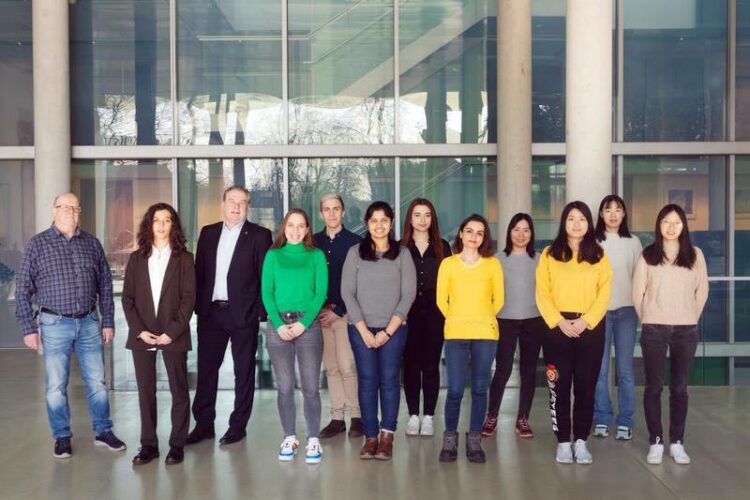New transport pathway for active substances into the cell discovered

Professor Werner Nau's research group at Constructor University discovered a novel method of drug delivery using spherical metal oxide molecules.
(c) Constructor University
One of the major challenges facing cell research is how to target substances to combat diseases. A team from Constructor University, in cooperation with scientists from the University of Vienna, discovered a new, promising method using spherical metal oxide molecules known as polyoxometalates. They report on the results of their research in the journal “Advanced Materials”, one of the most important publication media in chemistry and materials science.
The metal oxide molecules are already known as antitumor, antibacterial, antiviral and anticancer agents. What is new, however, is the discovery that certain variants with two different metals are also able to overcome membrane barriers. Drugs can, thus, reach a cell in a more targeted manner, which can lead to better and more efficient results in the medical and pharmaceutical field.
“The method has a broad application potential,” says first author Dr. Andrea Barba-Bon, who is researching the development of the method at Constructor University as part of Prof. Dr. Werner Nau’s chemistry working group, alongside doctoral student Maryam Ashjari.
The use of inorganic, i.e. non-carbon-based, drug transporters is a recent development that was only introduced last year in a Nature publication. While until recently the application was limited to spherical molecules with the element boron, new avenues are now opening up with metal-containing molecules. “For the first time, this creates possibilities for tailoring the transporters to the active ingredient to be delivered,” said Nau, “because the discovery of the new class means that a broader portfolio of different transporters is now available.”
Wissenschaftliche Ansprechpartner:
Faculty Contact:
Dr. Werner Nau | Provost and Professor of Chemistry
wnau@constructor.university | Tel.: +49 421 200-3233
Originalpublikation:
DOI: 10.1002/adma.202309219
Media Contact
All latest news from the category: Life Sciences and Chemistry
Articles and reports from the Life Sciences and chemistry area deal with applied and basic research into modern biology, chemistry and human medicine.
Valuable information can be found on a range of life sciences fields including bacteriology, biochemistry, bionics, bioinformatics, biophysics, biotechnology, genetics, geobotany, human biology, marine biology, microbiology, molecular biology, cellular biology, zoology, bioinorganic chemistry, microchemistry and environmental chemistry.
Newest articles

Patients Can Heal Through Precise, Personalized Bioceramic Grafts
A recent review is transforming the landscape of craniomaxillofacial bone regeneration with the introduction of personalized bioceramic grafts. This pioneering research explores the fabrication and clinical potential of synthetic grafts…

Decoding Cancer: 40 Years of Breakthroughs in Genetic Research
Cancer in children and adolescents is rare. Nevertheless, malignant diseases are still one of the most common causes of death in this age group. Survivors of childhood or adolescent cancer…

Let’s Think Before the First Drink: How Early Substance Use Might Lead to Brain Structure Differences Among Adolescents
Many differences appeared to exist prior to any substance use, pointing to the role brain structure may play in substance use risk, NIH-supported study suggests. Studies reveal factors that expose…



